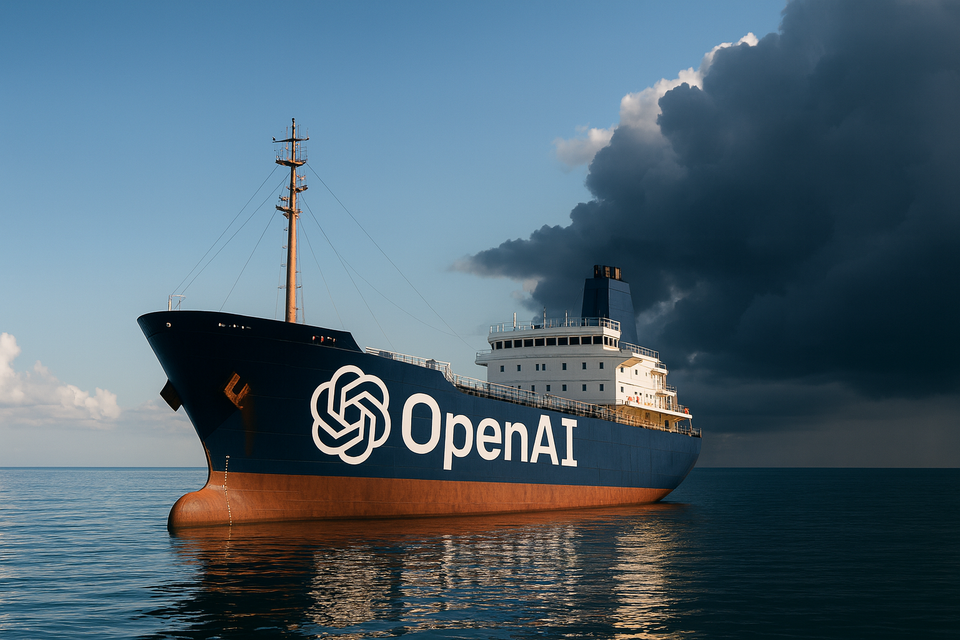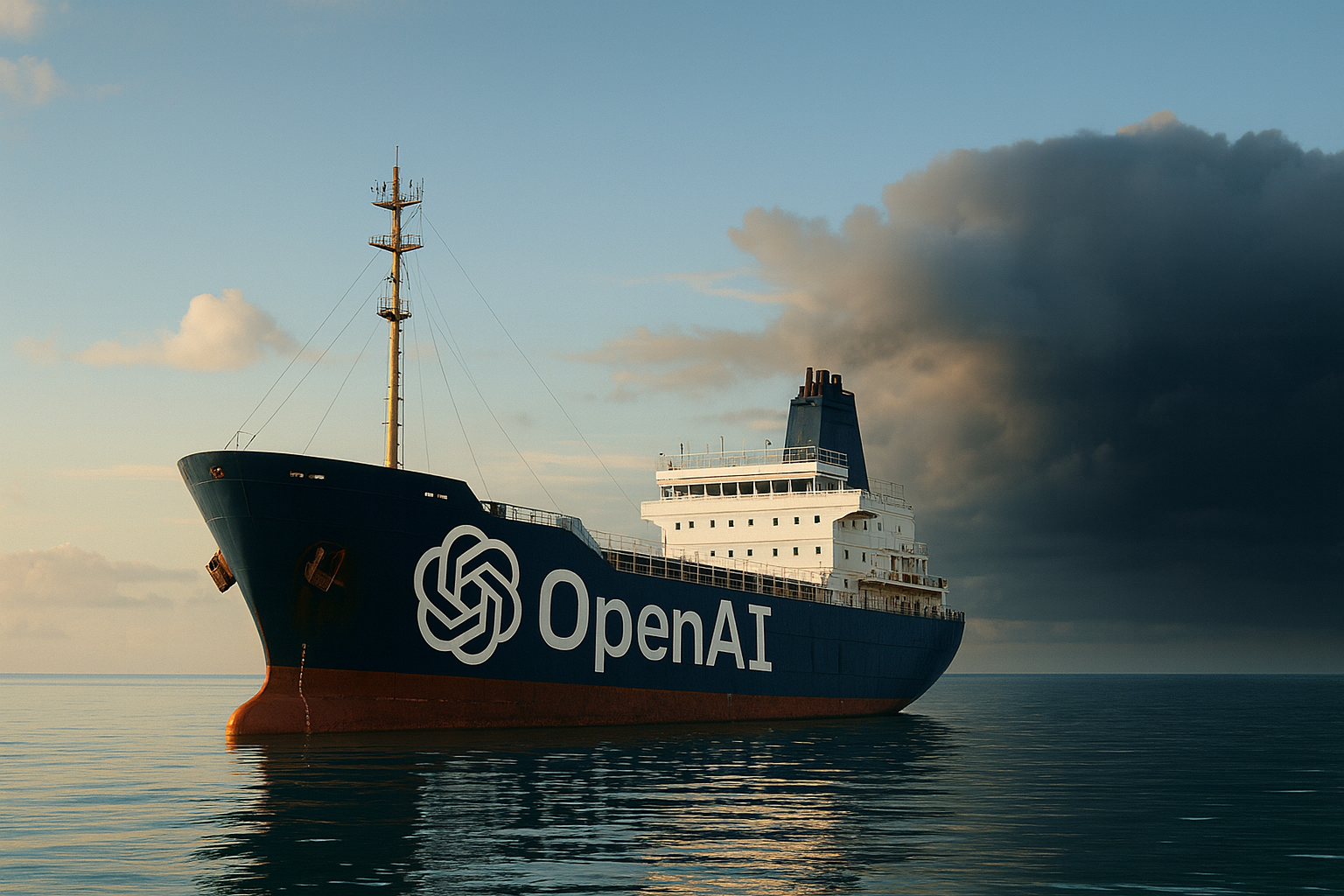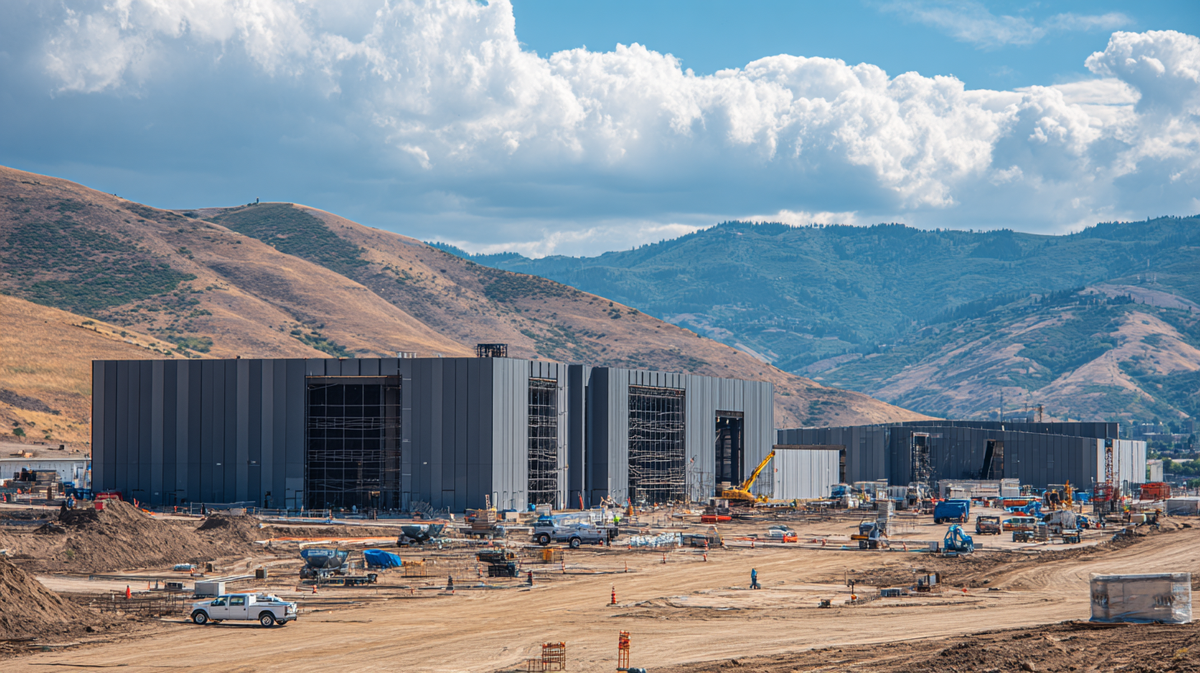OpenAI’s Rising Tide Strategy

I think we might all be overthinking this. Amidst the endless headlines around bubbles forming and circular payments, we're all trying to figure out the strategy in the bonkers amounts of money being thrown around to build up and out AI. We're all busting out the calculators – or more likely, the AI itself – to back into the right math equations for how this can all possibly pencil out. But I actually think the way the companies doing these deals are looking at it is far more simple. Essentially: AI is the future, this is the beginning, we should bet on that.
That is to say, I actually don't think even they think the math works right now. Of course it doesn't! I mean, in many cases, companies are committing billions of dollars that they literally don't have to commit. But the missing word there is "yet". There's a clear belief that getting the money – any amount of money – will be the easy part, as long as they can keep building to keep up with demand. And, in fact, the more they can build, the more demand will grow.
This is, of course, circular. That doesn't mean it's wrong. But it does mean it's dangerous.
Again, I'm just trying to give a sense of what I think the logic is inside these companies right now. They clearly know there's risk, but I think they also have such belief in this future – certainly OpenAI seems to – that they think the real mistake would be in not betting on it. In some cases that means moving as fast as possible to try to go after it, in other cases it means literally betting on it.
That's where the mysterious "new ideas" for financing come into play. In parsing Sam Altman's provocative words a couple weeks ago, I landed on a model where their massive (up to) $100B deal from NVIDIA is really just a way for a wildly unprofitable startup to be able to access debt to do data center build-outs in the way that only an insanely profitable company – like NVIDIA – can. It's both circular and clever: NVIDIA gives OpenAI cash in exchange for equity, which OpenAI uses to build out data centers, a large part of which is, yes, leasing NVIDIA chips. Those chip agreements are used by NVIDIA to raise cash in the form of debt to send to... OpenAI for these build-outs. And round we go.
But as it turns out, that's just one potential type of new idea for financing – after all, as Altman said, there are new "ideas", plural. And so I go back to the high level notion of what OpenAI, and NVIDIA, and everyone else doing these deals, is actually leveraging here: belief in the future of AI. As I wrote (and highlighted) at the end of my piece:
At this point I have to assume there will be another wonderful secret of finance in all this. Because a way to lease GPUs directly from NVIDIA in order to finance data center build-outs is somewhat interesting in its circular nature, but not that exciting. Perhaps that excitement comes from how these players think it can scale? I’m guessing we’ll hear something about how this will create a virtuous cycle where AI demand funds AI build out which fuels AI demand. But if any part of that cycle were to slow — let alone break… Hopefully an NVIDIA always pays its debts.
Well, it didn't take long for another idea to emerge. This week, OpenAI and AMD announced a new deal, one in which it wasn't AMD investing in OpenAI, but the opposite: OpenAI getting the rights to acquire up to 10% of AMD's stock.
Just as the news was breaking, Alex Kantrowitz and I were recording a podcast, so we tried to break it down in real time and I think did a pretty good job, talking through the high level notions from my post a couple weeks back. And sure enough, when AMD CEO Lisa Su went on Bloomberg, we got the following:
Inside the tech industry, executives argue these unorthodox business relationships are essential to meet an unprecedented surge in demand for AI services. AMD Chief Executive Officer Lisa Su told Bloomberg TV that the partnership with OpenAI is a “virtuous, positive cycle.” Likewise, Greg Brockman, OpenAI’s president and co-founder, said it will take an “industry-wide effort" using the entire AI supply chain to meet the immense demand for computing power to support ChatGPT and other products.
A "virtuous, positive cycle". How interesting...
Certainly the powers that be in such deals recognized that by simply announcing the deals, it boosts the stock prices of everyone involved. Matt Levine of Bloomberg jokes about this, but actually, I think he's hit closer to the actual strategy here than anyone else has:
This deal between OpenAI and AMD was obviously going to create a lot of stock-market value: The announcement of the deal would predictably increase the market value of AMD, and it’s not like it decreases the market value of OpenAI commensurately. Why not use that value to subsidize the deal? Schematically, OpenAI could buy AMD stock to predictably profit from the stock-price bump it created. Just going out and doing that in the market would be awkward — it might look like insider trading — but buying the stock from AMD is fine.
But that stock jump can be temporary without the deals themselves helping to power the stock prices going forward. And that's the key to the AMD deal, as the warrants that OpenAI is getting to purchase their stock are tied to stock price milestones. As John Foley notes in The Financial Times:
AMD will give OpenAI warrants entitling it to 10 per cent of the company if it meets certain targets. Should all go to plan, including AMD stock hitting $600 a share, Altman’s company will own a $96bn stake, for which it will pay just $1.6mn.
Unlike NVIDIA, AMD isn't giving OpenAI $100B in cash (much of it perhaps borrowed), they're giving them liquid stock – up to almost $100B worth if all the milestones are hit – which they can cash in to... buy AMD chips. Another wonderful new model!
Of course, this seems more brittle than the NVIDIA one because if AMD's stock doesn't rise as expected... Su's "virtuous, positive cycle" well, stops.
Again, it's a risk, but it's clearly the one that these companies are signing up for. OpenAI, perhaps more out of necessity, but everyone must be looking at the money flowing through the system and the value being created in the stock market and wondering how best they too can leverage it.
It's undoubtedly a good strategy during boom times. The problem is that boom times don't last forever. Even if you believe that AI is the next massive technological wave – even if you believe it's the biggest technological wave, ever – the reality remains that markets ebb and flow and slow downs always happen for reasons that range from rational to irrational. The only certainty is that a correction will happen. The hope would be that it's a small one and that it's far off in time, but no one can know that for sure.
Hopefully the players here have a plan for that moment. And hopefully it's not just powering through it, because if I'm correct about the above strategy, it's so heavily dependent on the flywheel that any slowdown – let alone a stop – will have a cascading effect that could be catastrophic. Both for the stock market, given how vital the technology stocks, led by NVIDIA, are to the overall market at the moment – but also potentially for AI itself, if the funding mechanism for all of this is hurt by a downturn.
You'd think a company like Google, whose strength in both their balance sheet and technology is undoubtedly driving at least some of the risk OpenAI is taking on here to try to win in AI, would be fine in such a scenario. And certainly they'll be better situated to handle any storm. But their stock price would not be immune to this downturn and that would have second-order effects as well in terms of investment and the like.
Anyway, this is my read right now on what is happening here. Yes, it's a bubble, but bubbles also naturally form and can have good side effects as everyone is well aware by this point. The more interesting and potentially worrying element are the "new ideas" for finance that these companies are coming up with to try to leverage the bubble.
On paper, you get why they're doing it – and again, it's not clear that OpenAI in particular has many other options given the amount of capital they need as a still-unprofitable startup – and they certainly might not be wrong about the high level notion of where AI is headed and how important it will be. But it also seems unlikely that they'll be able to just power through any downturn in the market. So this is all a bet that any correction will be so small that it can be weathered without a hiccup (and perhaps all of the foreign money can help bridge any short-term gaps). And that this is so early in the cycle that equity values are still cheap – perhaps even insanely cheap – relative to where they end up once the cycle completes. And that all of these companies can help to fuel one another to push the race towards AGI farther, faster. That's the bet.

Update October 21, 2025: Some further thoughts on these topics...












